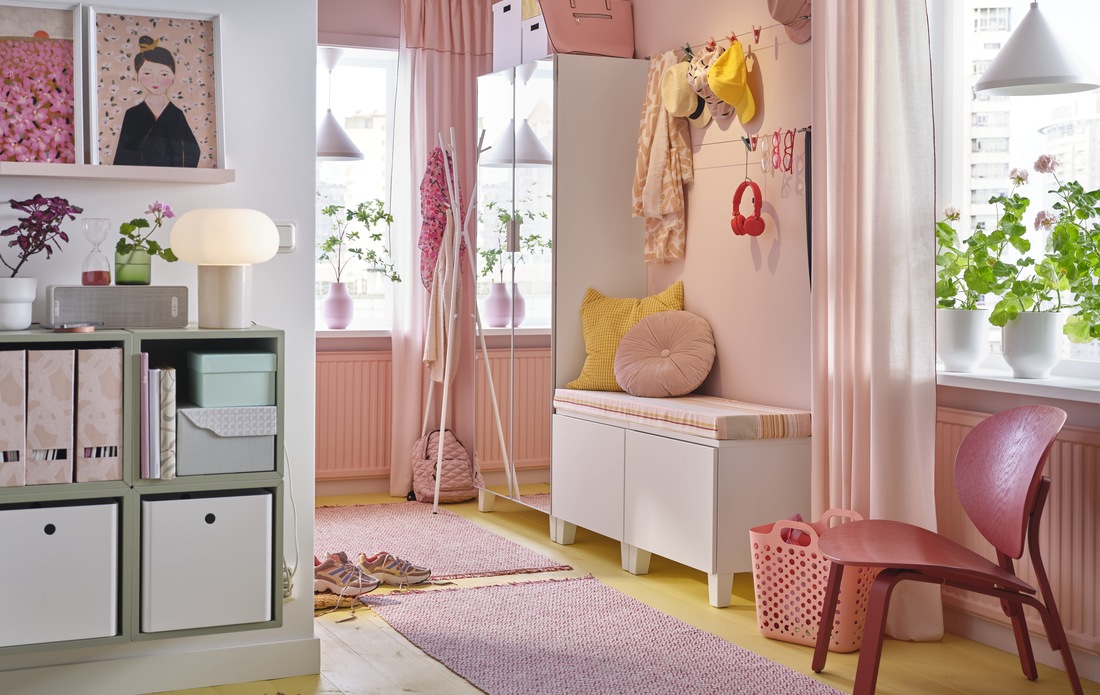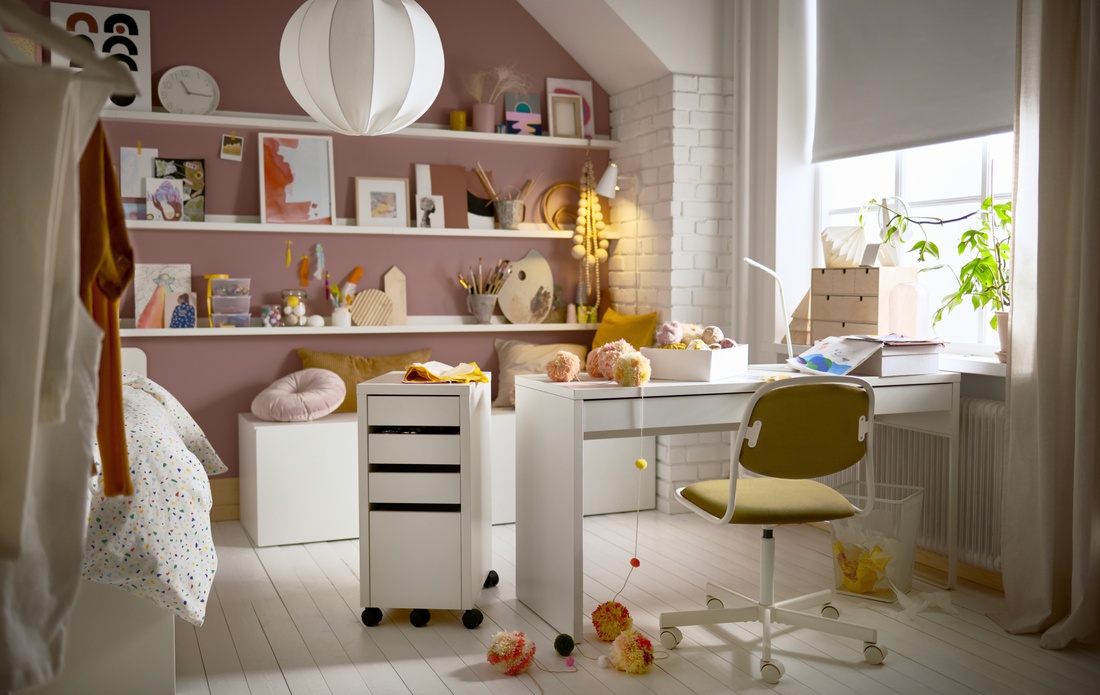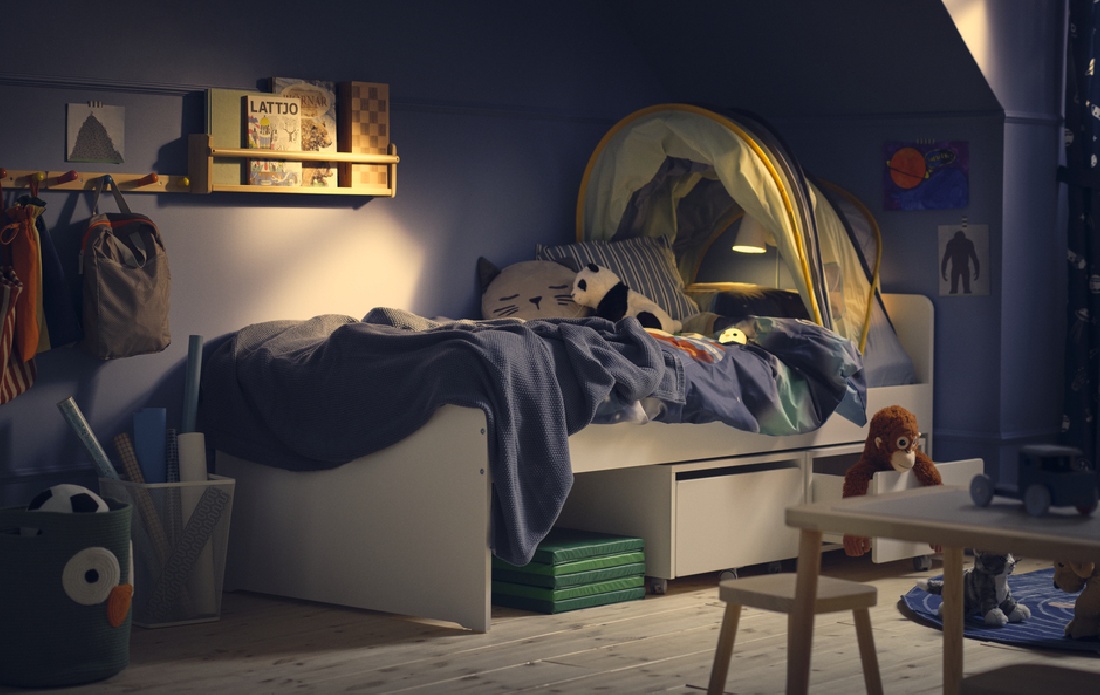Are you bored with the monotonous appearance of your home walls? Wallpaper can be an easy and stylish solution to changing the atmosphere of a room without having to repaint. With various motifs, colors, and textures, wallpaper can bring a new feel to your room.
However, choosing the right wallpaper is not just about aesthetics. The type of material, installation method, and maintenance also play an important role in ensuring that the wallpaper remains durable and long-lasting.
In this article, we will discuss various types of wallpaper, effective installation techniques, and maintenance tips to ensure the beauty of your interior lasts a long time.
Why Choose Wall Paper for Home Decoration?
Wallpaper for home decoration offers various advantages compared to ordinary wall paint. Wallpaper comes in a variety of motifs, colors, and textures that can give a unique character to the room.
With a more varied choice of designs, you can create a different atmosphere in every corner of the house, ranging from elegant to minimalist. With proper care, wallpaper is one of the most durable and efficient room decorations to increase the comfort and beauty of your home.
Advantages of Wallpaper Compared to Painting Walls
Wallpaper has the main advantage in terms of a wider variety of designs compared to wall paint. With wallpaper, you can choose various motifs, colors, and textures that are difficult to achieve with paint alone.
For example, the effect of marble, wood, or intricate geometric patterns can be easily obtained without the need for special painting techniques. In addition to aesthetics, wallpaper is also more practical in terms of installation and durability.
Compared to painting which requires several layers, drying time, and the risk of a pungent paint odor, wallpaper installation is faster and does not cause an odor. If the wall has small cracks or stains that are difficult to clean, wallpaper can also be an instant solution to disguise them without the need for additional repairs.
How Wallpaper Changes the Atmosphere of a Room
Wallpaper has unique complex motifs such as flowers or stripes that can change the impression of a room. For example, 3D wallpaper with a leaf motif can bring a natural impression into the room, creating a calming atmosphere.
In addition, wallpaper has a distinctive texture that can add a luxurious and deep impression, while plain wallpaper is more able to highlight furniture and other decorative elements. Wallpaper also has colors that can help create an atmosphere that suits the function of the room.
For example, soft colors for a child's room create a calming atmosphere or striking colors for a dynamic workspace.
Wallpaper Types & Their Advantages
Wallpaper has various types according to how it is installed. Each wall wallpaper has its advantages, here is a summary:
Wallpaper Types Based on Material
Wallpaper can be categorized based on the material it is made from, which affects its appearance, durability, and ease of maintenance. Here are some types of wallpaper based on its material:
Vinyl wallpaper
Vinyl wallpaper is known for its high durability and ease of cleaning because it has a washable surface. This material is suitable for rooms that are often exposed to dirt or moisture such as kitchens, bathrooms, and children's play areas.
For installation it is relatively easy, you only need to make sure that the walls are clean from dust and dry before application. To clean it, simply use a damp cloth and a little detergent if necessary.
Fabric wallpaper
Made from fabric fibers such as linen, silk, or cotton that give a luxurious and elegant look. This material also has a unique texture that adds an exclusive impression to the room.
In addition, with its fabric material, this wallpaper also gives an aesthetic and warm impression so it is the right choice for a living room or bedroom.
Paper wallpaper
Made from paper material with various printed motifs, this wallpaper is often the choice because the price is more affordable, has many choices of motifs and colors, and is environmentally friendly.
This wallpaper is also simpler to care for, just use a dry cloth to remove dirt or dust, making it suitable for those who like to change the room decor regularly.
Types of Wallpaper Based on Installation
Wallpaper can also be categorized based on how it is installed. Here are two main types of wallpaper based on the installation method:
Wallpaper with Glue
This type of wallpaper requires special adhesive or glue to be installed on the wall. Usually, this wallpaper has high durability and is stronger to stick for a long time. This type is suitable for permanent use or long-term decoration, especially in rooms that are often used such as living rooms and bedrooms.
Self-Adhesive Wallpaper
This wallpaper has built-in adhesive on the back, so it does not require additional glue. Its advantages are its ease of installation and its ability to be removed without damaging the wall, making it an ideal choice for apartment renters or those who like to change their decorations regularly.
Although practical, its durability tends to be lower than wallpaper with glue, especially if it is often exposed to moisture or friction, causing moisture or tears.
What is the Difference Between Wallpaper and Wall Stickers?
It is important to understand the main differences between wallpaper and wall stickers so that they can be adjusted to the needs of the room. Here are the characteristics of each of these wall decorations.
Characteristics of Wallpaper
Generally made of thicker materials such as paper, vinyl, or cloth. Some types have additional textures or layers that make them more durable and suitable for long-term use.
Offers a wider and often more complex design variety with a wider choice of motifs. Wallpaper includes textures, more detailed motifs, and richer visual effects.
Characteristics of Wall Stickers
Usually made of vinyl or thin plastic with an adhesive layer on the back. Because it is thinner, wall stickers are more flexible but are more susceptible to damage if damp or exposed to sunlight than wallpaper.
With built-in adhesive, it can be directly attached to the wall without the need for additional glue. The installation process is faster and easier, suitable for temporary decoration.
How Long Does Wallpaper Last?
Wallpaper has a long durability but varies according to the material used and how to care for it. See the following explanation.
Factors Affecting Wallpaper Durability
The material used for wallpaper is one of the keys to the durability of this wall decoration. Wallpaper that has thick materials such as vinyl, PVC, and fabric has a longer durability than paper materials.
Textured wallpaper or those with special treatments such as anti-stain coatings can provide additional protection against dirt and liquids, extending its aesthetic and functional life.
Other factors that affect the durability of wallpaper are room conditions and humidity.
Rooms with high humidity levels or direct sunlight exposure can accelerate wallpaper degradation. However, this can be overcome by choosing wallpaper that has special specifications such as resistance to moisture or UV, thereby reducing the risk of damage to the wallpaper.
Wallpaper Treatment to Keep It Durable
Proper installation is one way to make wallpaper last a long time. Using the right adhesive tools and accurate installation techniques by professionals can prevent problems such as air bubbles or loose edges.
In addition, routine maintenance can be carried out by cleaning the wallpaper regularly in the right way according to the type of material, for example, using a duster for dust and a damp cloth for stains.
Weaknesses of Wall Wallpaper That You Need to Know
Although wall wallpaper can add aesthetics and uniqueness to your room, there are some important notes to consider before making a decision. Understanding this can help you prepare the right strategy or choose an alternative that is more appropriate to your needs and room conditions.
More Expensive Costs Compared to Paint
Compared to regular paint, using wall wallpaper usually requires a larger initial cost, especially if you choose premium materials or designs. This cost also includes installation, which may require professional labor to ensure neat and long-lasting results.
Installation Requires Precision
Wallpaper must be installed with high precision, especially for complex designs or patterns that must be aligned. This also requires more precision, small errors can result in wasted material or an imperfect appearance.
In addition, some types of wallpaper require special adhesives and installation methods, so it takes more time to complete the installation process.
Some Wallpapers Are Difficult to Remove
Some types of wallpaper, especially those that use strong glue or are designed to be durable, can be very difficult to remove. The wrong removal process can damage the wall and cost extra money to repair.
When removed, some wallpaper can peel off the paint or plaster underneath, especially if the wall was not properly prepared before the wallpaper was installed.
Tips for Choosing the Best Wallpaper for Your Room
Choosing the right wallpaper for your room not only enhances the aesthetics but also affects the function and atmosphere of the room. Here are some important tips to ensure you choose the best wallpaper, which is not only beautiful but also practical and durable.
Choosing Wallpaper According to Room Size
Before buying wallpaper, make sure to measure the wall area accurately. This will help you buy the right number of rolls, avoiding wasting material or shortages during installation. For example, for smaller rooms, choose a more subtle pattern or light color to make the room feel more spacious.
Matching Patterns to Room Function
Choose warm and welcoming patterns or designs that promote a relaxed and comfortable atmosphere. Floral motifs or soft lines are often suitable for this area. For example, for spaces that require a more formal or calm atmosphere, choose wallpaper with minimalist motifs or patterns that are not too busy to avoid distractions.
Determine the Durability According to Needs
In rooms such as kitchens or children's playrooms, choosing wallpaper that is stain-resistant and easy to clean is important. Vinyl or PVC wallpaper is highly recommended because of its high resistance to stains and moisture.
For areas that are often exposed to direct sunlight or have high humidity, be sure to choose wallpaper that has UV protection or is anti-fungal to prevent dulling and wall damage.
Choose the Right Wall Decoration for Your Home
Confused about finding the right wall decoration for your room? Visit
IKEA. IKEA provides a variety of
wall decoration options that are not only aesthetic but also functional and suitable for your various needs and tastes.
By choosing the right decoration, you not only improve the appearance of the room but also add comfort and satisfaction in using the space.
Author: Ayu Nindyakirana as Web & Digital Content Specialist


